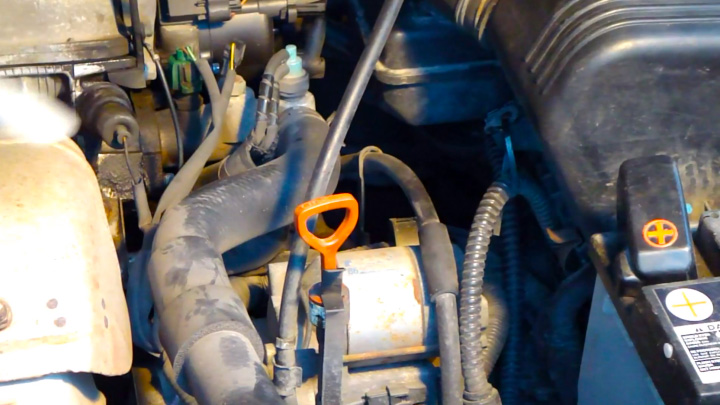

Warm up the Engine The temperature of your engine will change the level of fluid that the transmission dipstick shows.

If you make sure to do it properly, you can be certain that you’re getting an accurate reading.ġ. Even if you’ve never opened the hood of your car, you can still check your fluids.
#Transmission fluid check how to#
How to Check Your Transmission Fluid LevelĬhecking the level of transmission fluid in your car is a simple process that anyone can do. Checking your fluid level regularly can help you know if your transmission is leaking. If you are noticing red fluid on the ground after parking, you might have a transmission leak. Transmissions can sometimes leak and this will require you to top off the fluid more often. Unfortunately, that isn’t always the case. Ideally, you wouldn’t lose any transmission fluid and the level will remain the same until the next time it’s changed. Either way, you will need to top off the fluid and make a service appointment for it to be diagnosed.Ĭhecking your transmission fluid level regularly can give you a good idea of the condition of your vehicle's transmission. You should not be losing a noticeable amount of fluid on a regular basis and if you are, this is a good indicator that you either have a leak or that the fluid is burning off. If you suspect that you have a transmission fluid leak, you can check the levels daily and keep a log of where they’re at as time goes by. Doing this regularly will keep you informed on the fluid health of your car so you can know whether or not you need to take it into a shop and get it looked at. These checks include your engine oil, power steering fluid, brake fluid, coolant, and transmission fluid. It’s a good idea to check all of your car’s fluid levels at least once a month. How Often Should You Check Your Transmission Fluid Level? Regular maintenance is one of the best ways to ensure that your vehicle stays running for longer and with fewer issues.

#Transmission fluid check manual#
Whether you have an automatic or manual transmission, rear-wheel, or front-wheel-drive car, you should know how to maintain it. Knowing what this essential fluid does and when it should be changed can help you stay on top of your car’s maintenance. While most people are familiar with getting motor oil changes, you might not be as well-versed in changing transmission fluid or why it is important. They need to be as clean and fresh as possible to keep your vehicle running smoothly. After completion, reinsert the transmission fluid dipstick in the designated hole.Fluids are the lifeblood of your car. Be careful so the gearbox is not overfilled or automatic transmission fluid is not spilt on hot engine surface. Add transmission fluid carefully in small quantity and recheck the level each time after doing so until the fluid level reaches warm level marking. Take a long funnel and insert it into the transmission fluid dipstick hole. Also, in that case, you don't need to take the car to the mechanic. You can fill the transmission fluid by yourself, which will save time and money both. If the automatic transmission fluid level doesn't reach the warm level marking, you need to add more automatic transmission fluid. It might have two marking for full, one warm and another cold. Take the necessary precautions while doing this as the transmission fluid can be hot as the system is live.Īfter taking the fluid dipstick out, check the markings at the end of it. Remove it, wipe it clean and reinsert it fully before taking it out. The transmission fluid dipstick looks similar to the engine oil dipstick. Usually, it stays where the transmission or transaxle meets the rear of the engine. Locate and find the automatic transmission fluid dipstick.


 0 kommentar(er)
0 kommentar(er)
